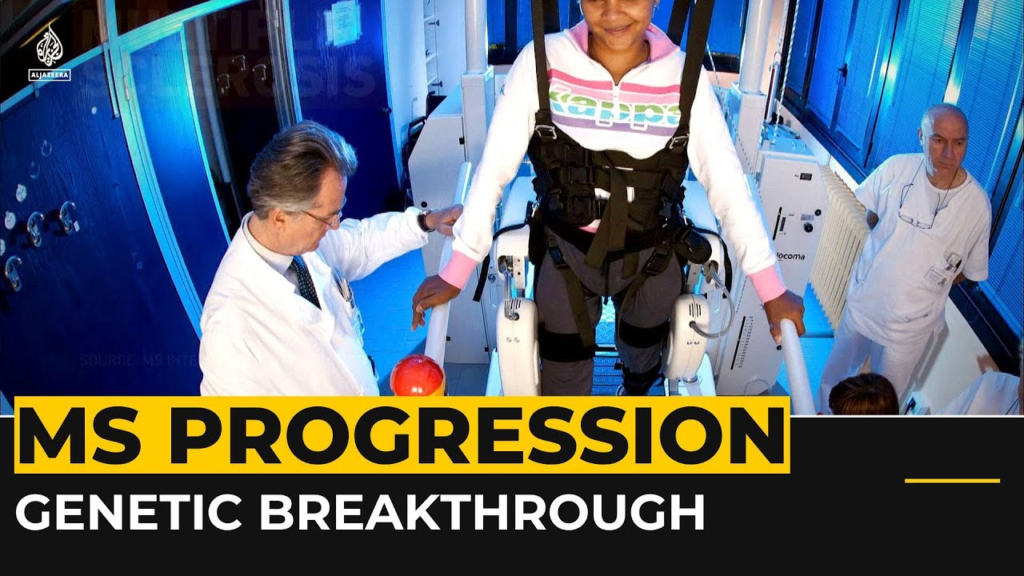
In a sit-down with ‘Good Morning America’ alongside friend Jamie-Lynn Sigler, the ‘Dead to Me’ star opens up about her battle with Multiple Sclerosis.

In a sit-down with ‘Good Morning America’ alongside friend Jamie-Lynn Sigler, the ‘Dead to Me’ star opens up about her battle with Multiple Sclerosis.

Making small changes in your life can and will lead to positive outcomes in the future. Becoming more engaged in life and not sweating the small stuff. To have the courage to step through the doors life presents and then maybe to go on a journey you never imagined. Diagnosed with Multiple Sclerosis in 1995, Rob has taken on the challenge of a TEDx talk the way he deals with pretty much everything.

A study of more than 22,000 people with multiple sclerosis (MS) has discovered the first genetic variant associated with faster disease progression, which can rob patients of their mobility and independence over time. The work resulted from a large international collaboration of more than 70 institutions worldwide, led by researchers from UCSF (USA) and the University of Cambridge (UK). About 3 million people live with multiple sclerosis or MS, but the real number may be higher. Women are more likely to develop MS than men. When diagnosed, the immune system attacks the central nervous system, causing symptoms that range from numbness to disability. Although scientists know MS is associated with genetic risks, MS is not an inherited disease, and doctors have struggled to understand why some cases progress faster than others. This latest study combed through 13,000 patients’ DNA and found a gene that is linked to the onset of severe disability. Sergio Baranzini is a Neurology Professor at the University of California San Francisco. He is the study’s lead author, and he joins us live from San Francisco to discuss the latest updates.

Immigrants to Canada who have spent a greater proportion of their lives in Canada have a greater risk of developing multiple sclerosis (MS) than people who have spent a smaller proportion of their lives there, according to a new study. The study does not prove that an increased proportion of life in Canada causes MS; it only shows an association.
“Other studies have shown that immigrants tend to have better health than long-term residents, which is thought to be because healthy people are more likely to choose to immigrate,” said study author Manav V. Vyasy. “We wanted to see if the lower risk of MS declines over time as people adopt some of the unhealthy lifestyles of their new country or are exposed to other environmental factors that increase their risk.”
The study involved 1.5 million immigrants who arrived in Canada between 1985 and 2003 and were covered by health insurance for at least two years with no diagnosis of MS. The people were then followed through 2016.
During that time, 934 people were diagnosed with MS, a rate of 0.44 cases per 100,000 person-years. Based on previous research, the overall rate of MS in Canada is estimated to be 15 to 17 cases per 100,000 person-years. Person years represent the number of people in the study and the amount of time each person spends.
The person’s age at arrival in Canada and the amount of time since they immigrated determined the proportion of life spent in Canada. Overall, people have spent an average of 20% of their lives in Canada.
Researchers found that people who had spent 70% of their lives in Canada were 38% more likely to develop MS than people who had spent 20% of their lives there. This result took into account other factors that could affect the risk of MS, such as sex, age and other health conditions.
The researchers did not find any differences between men and women or between people belonging to one of Canada’s immigration classes: family, refugee, or economic.
“Our data did not include information on various environmental factors associated with MS, but our theories include that this increase in the risk of MS over time may be due to lifestyle factors such as higher rates of smoking and changes in diet, environmental factors such as sunlight exposure and biological factors such as the composition of the gut microbiome that have been previously associated with an increased risk of MS,” Vyas said. “Some immigrants may be more susceptible to these risk factors due to social determinants of health such as income, education, neighbourhood and access to nutritious food.”

Actor and advocate Selma Blair tells Meet the Press Moderator Kristen Welker that she lives “in pain every day” after her multiple sclerosis went into remission and opens up about her treatment.